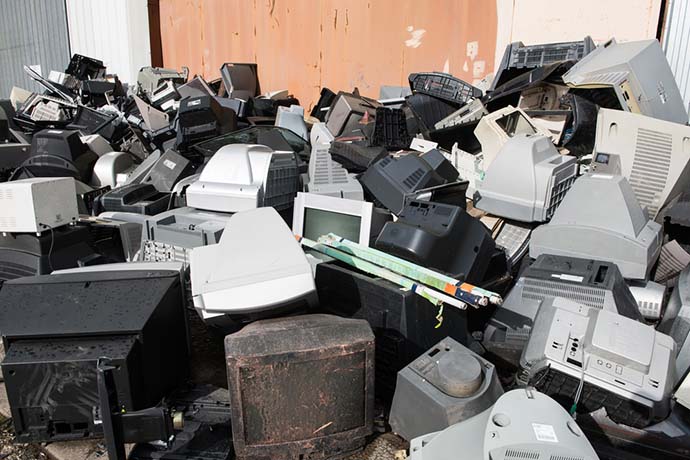The weight of e-scrap generated globally has slowed or even declined in recent years, according to a recently released study. That trend comes even as the combined weight of scrap electronics and electrical appliances has grown substantially.
According to the Global E-Waste Monitor, a report released last week, the weight of discarded mobile phones, computers, printers and other small IT devices has curtailed its growth in recent years. Display devices entering the end-of-life stream contributed less weight in 2016 than they did a year earlier. The report was authored by researchers at United Nations University and other organizations.
The slowing is largely due to product miniaturization and lightweighting, the report notes. Devices with screens are expected to decline by weight in the coming years, because of a decrease in CRTs and increase in lighter flat-panel displays (FPDs).
Kees Baldé, who co-authored the study, told E-Scrap News the trend, known as “dematerialization,” is likely to continue. Besides product lightweighting, Baldé pointed to the possibilities for large-scale changes in the way electronics are consumed: He referenced device sharing and the concept of electronics being leased or rented rather than owned.
From 2016 through 2020, the weight of discarded small IT equipment will grow just 2 percent per year, the report predicts. Display devices, it adds, will decline by 3 percent per year through 2020.
E-scrap collectors and processors should pay close attention to these trends, Baldé said, as well as to advanced recycling technologies that are becoming more prevalent, including robotics and artificial intelligence.
“These are all game-changers to the traditional business models they have now,” he said.
Baldé said the data in the report can be used to help countries identify challenges and opportunities in electronics recycling. That could spur further legislation, which he said is an effective way of increasing recycling rates.
“We see a trend that countries are drafting and adopting laws on e-waste management, so the global awareness seems to grow,” Baldé said. But despite those developments, he is still surprised at the low percentage of documented collection and recycling. The remainder, he added, “is likely to be recycled under inferior conditions or dumped, unfortunately.”
The study was authored by researchers affiliated with United Nations University, the International Telecommunication Union and International Solid Waste Association.

























